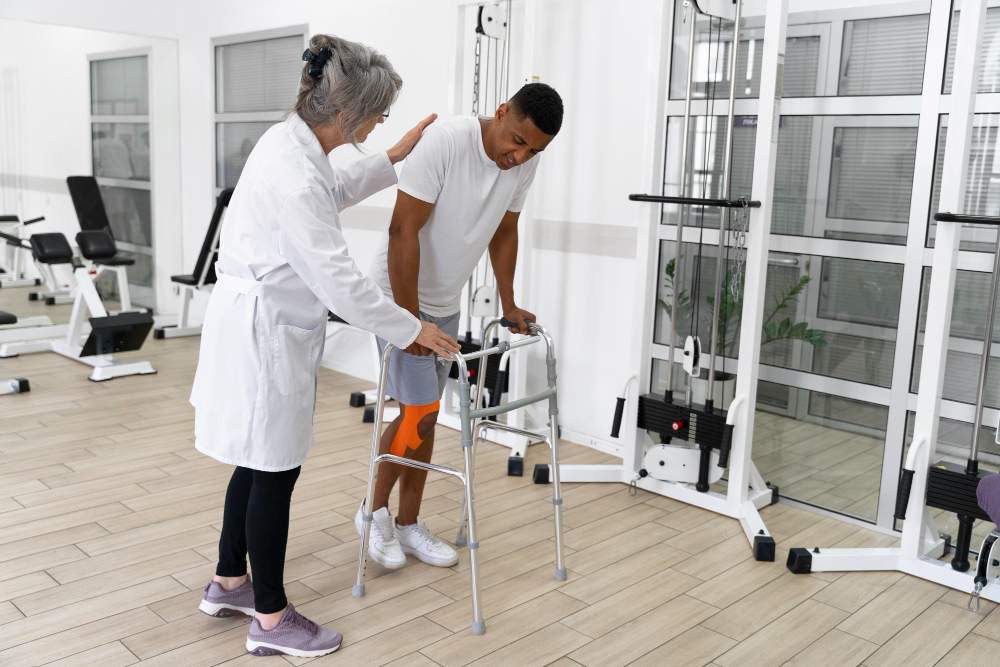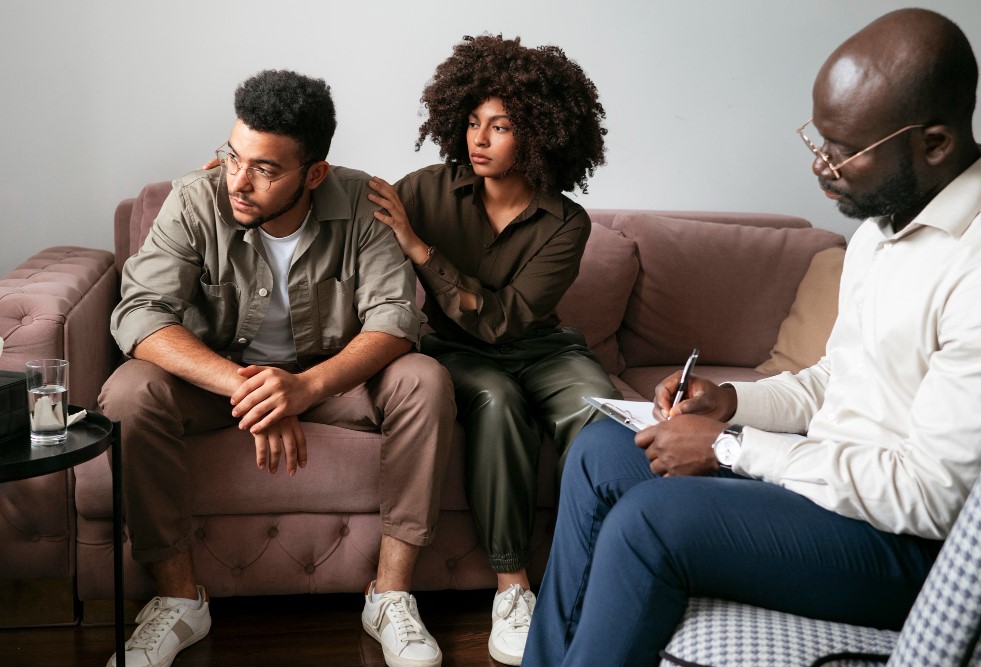
How Helping People Do Everyday Things Became Medicine
Teaching someone to make a sandwich can be life-changing medicine. Helping a child play with toys can actually rewire their brain. Occupational therapy has been long known to be a profession with a history so amazing, and it's surprising more people don't know this incredible story.
This is a journey through time to discover how occupational therapy became one of healthcare's most important – and most misunderstood – professions.
The Ancient Beginning
The story starts way back in 100 BC with a Greek doctor who dared to be different named Asclepiades. During that time, people with mental health problems faced incredibly harsh treatment. Most society believed they were cursed by the gods or possessed by demons. The "treatment" usually involved chains, isolation, or worse.
But Asclepiades was different. This rebel doctor looked at his suffering patients and thought there had to be a better way.
Instead of chains and harsh treatments, he prescribed something revolutionary: warm, relaxing baths, gentle massages, light exercise, and music therapy. While everyone else was treating mental illness like a punishment from heaven, this doctor was basically running the world's first spa clinic.
His fellow doctors probably thought he'd lost his mind. The idea of giving mentally ill people baths and music seemed absurd to most physicians of that era.
But here's the amazing part – it worked! Patients who received Asclepiades' gentle treatments got better. They became calmer, happier, and many even returned to normal life. He had discovered something that would take the world over 2,000 years to fully understand: meaningful activities can heal both body and mind.
This ancient doctor had stumbled onto the foundation of what we now call occupational therapy services. He just didn't know it yet.
The Dark Times when Good Ideas Got Forgotten
Unfortunately, great discoveries don't always survive the test of time. After Rome fell, Europe entered what historians call the Dark Ages – and they were especially dark for people with disabilities or mental health challenges.
For more than a thousand years, Asclepiades' compassionate approach was completely forgotten. People went back to believing that mental illness was caused by evil spirits or divine punishment. The idea that activities could heal disappeared. The belief that people with disabilities deserved kind treatment also vanished.
All that wisdom, all that progress, simply disappeared. Patients were back to being locked in dungeons, ignored by society, or subjected to treatments that were more about superstition than healing.
Some monasteries provided basic care, which was better than nothing, but the sophisticated understanding of therapeutic activities was lost to history. This period serves as a sad reminder that progress isn't guaranteed – society must fight to keep good ideas alive.
The Great Rediscovery
Fast forward to the late 1700s. The Age of Enlightenment was changing how people thought about human rights and dignity. Two doctors were about to rediscover what Asclepiades knew centuries before.
In France, Philippe Pinel did something that shocked everyone: in 1793, he literally unchained patients at a mental hospital in Paris. But he didn't stop there. He started treating them like human beings again, giving them structured activities, meaningful work, and – most importantly – hope.
Around the same time in Germany, Johann Christian Reil was doing similar work. Together, these doctors launched what became known as "moral treatment" – the revolutionary idea that people with mental illness deserved respect and could get better through engaging activities.
Suddenly, hospitals started adding workshops, gardens, and purposeful tasks to patient care. The results were dramatic. Patients began improving significantly. Their moods lifted, their behavior stabilized, and many returned to their families and communities.
It was like watching a 1,000-year-old light bulb finally flicker back on. The connection between meaningful activity and healing was impossible to ignore. This was the beginning of evidence-based practice that would grow into today's mental health services.
The Birth of a Profession
World War I was devastating, but it created an urgent need that would give birth to modern occupational therapy. Thousands of young soldiers were coming home with injuries that doctors could treat but couldn't completely fix.
These brave men had lost arms, legs, or suffered brain injuries. Many had what people now know as PTSD. Traditional medicine could save their lives, but how could they live those lives meaningfully? How does a soldier who lost his writing hand learn to work again? How does someone with a brain injury relearn to take care of themselves?
This crisis sparked incredible innovation. Healthcare workers began developing systematic ways to help veterans regain the skills they needed for daily life. They combined the ancient wisdom of Asclepiades with modern understanding of how the body and brain work.
Eleanor Clarke Slagle – often called the mother of occupational therapy – emerged as a pioneer during this time. She was brilliant at breaking down everyday activities into smaller steps and gradually making them more challenging as patients improved. If someone needed to relearn how to use their hands, she might start with simple crafts and slowly work up to complex tasks like writing or woodworking.
Slagle understood something profound: the goal wasn't just to exercise muscles or practice movements. The goal was to help people do the things that made their lives meaningful.
World War II accelerated this progress even more. Occupational therapists worked alongside doctors, helping wounded soldiers adapt to new realities while keeping their sense of purpose and identity. They weren't just treating injuries – they were restoring lives.
The Science Behind the Occupational Therapy
Modern science has proven that those ancient doctors were onto something huge, even though they couldn't explain why their methods worked.
When Asclepiades prescribed music therapy, he was unknowingly activating multiple areas of the brain at once. Today's research shows that music literally helps rebuild neural connections after brain injury. That's why modern speech therapy services often incorporate singing and rhythm – it's not just fun, it's powerful medicine.
When he encouraged gentle exercise, he was promoting the release of natural feel-good chemicals called endorphins. He was also helping patients grow new brain cells – something science has only recently discovered is possible throughout entire lifespans.
The brain has this amazing ability called neuroplasticity. Think of it like this: if a road gets damaged, the brain can build detours around the problem. When occupational therapists help stroke patients relearn daily activities, they're helping the brain create these new pathways.
This is why occupational therapy works for so many different conditions. Whether it's helping a child with autism learn social skills through play or assisting an elderly person maintain independence after a fall, the principle is the same: meaningful activity literally changes the brain for the better.
Occupational Therapy in the Modern World
By the mid-1900s, occupational therapy was becoming a respected healthcare profession. Schools were established, standards were created, and research began proving what practitioners had observed: meaningful activity is powerful medicine.
The profession expanded beyond war veterans and mental health patients. Occupational therapists began working with children who had developmental delays, adults recovering from strokes, and people with physical disabilities. They discovered that the same principles worked across all ages and conditions.
What makes occupational therapy unique is its focus on real life. While other therapies might exercise muscles or practice skills in isolation, OT always connects treatment to meaningful activities. A physical therapist might help someone strengthen arm muscles, but an occupational therapist helps use that stronger arm to hug grandchildren or paint a picture.
This real-world focus led to innovations in pediatric occupational therapy. Instead of boring exercises, children with developmental challenges play games, create art, and engage in activities that build skills while having fun. A child learning to write might start by finger painting, then progress to drawing in sand, and finally graduate to pencil and paper – all while playing and exploring.
The Technology Revolution
The late 20th and early 21st centuries brought amazing technological advances to occupational therapy. But here's what's beautiful about this profession – technology enhanced rather than replaced the human touch that makes OT so effective.
Virtual reality systems can now simulate real-world environments for safe practice. A person afraid of heights can practice climbing stairs virtually before trying the real thing. Someone relearning to drive after a stroke can practice in a simulator before getting behind the wheel.
Robotic devices help provide the precise, repeated movements needed for brain retraining. But these aren't cold, mechanical exercises – they're programmed to help people practice meaningful activities like reaching for a coffee cup or turning a door handle.
Apps and computer programs track progress and provide feedback that motivates people to keep working toward their goals. But the most important element remains unchanged: a caring therapist who understands that healing happens through human connection and meaningful activity.
Telehealth services have made occupational therapy more accessible than ever. Therapists can now guide patients through activities in their own homes, which makes perfect sense – after all, the goal is to help people succeed in their real-life environments.
How OT Changes Lives
The impact of occupational therapy extends far beyond individual patients. When someone regains independence after a stroke, it transforms their entire family. When a child with autism learns to communicate effectively, it changes their educational journey forever. When a veteran finds meaningful work despite PTSD, it strengthens their whole community.
Consider how occupational therapy helped a grandmother who had a stroke and couldn't prepare meals for her family anymore – something that had been central to her identity for decades. Through occupational therapy, she didn't just relearn to cook; she reclaimed her role as the family's nurturing center. The ripple effects touched three generations.
Or think about a 7-year-old with sensory processing challenges who couldn't tolerate the feel of clothing or the sound of the school cafeteria. Through occupational therapy using play-based innovative treatment approaches, he learned to manage his sensory needs. Now he can focus in class, make friends, and participate fully in childhood.
These stories multiply across millions of lives touched by occupational therapy. It's a reminder that healing one person can change the world in small but profound ways.
What Makes OT Special
After more than 2,000 years of evolution, what makes occupational therapy truly special hasn't changed. It's the understanding that people heal through doing, through engaging with the world around them in meaningful ways.
Other medical fields might focus on symptoms, diagnoses, or body parts. Occupational therapy focuses on the whole person – their dreams, their roles, their relationships, and their desire to live life fully. It's not enough to heal someone's body if their spirit remains broken.
This holistic approach is why occupational therapy works with such a wide range of conditions. Whether someone has a physical disability, a learning difference, a mental health challenge, or is simply aging and wanting to maintain independence, the principles remain the same:
- Everyone deserves to participate in meaningful activities
- Healing happens through engagement, not just treatment
- The goal is not just recovery, but living life to the fullest
- Small improvements in daily activities can have profound impacts on quality of life
The Future of Occupational Therapy
As society looks ahead, occupational therapy continues to evolve while staying true to its ancient roots. New research in brain science, genetics, and technology opens exciting possibilities for helping people in ways never before imagined.
Artificial intelligence might soon help customize therapy programs for each individual. Gene therapy could address some conditions at their source. Brain stimulation techniques could accelerate recovery from injury.
But no matter how sophisticated the science becomes, the heart of occupational therapy will remain beautifully simple: helping people do the things that make life worth living.
The profession is also becoming more diverse and culturally responsive. Modern OTs understand that meaningful activities look different across cultures, ages, and backgrounds. What matters to a teenager in Tokyo is different from what matters to a grandmother in rural Texas, and effective therapy must honor those differences.
Conclusion
The legacy of Asclepiades lives on every day, in every person who believes that what people do matters, that how they engage with the world defines them, and that everyone deserves the chance to live a meaningful life.
The profession has never been better equipped to help people overcome challenges and achieve their dreams
Modern healthcare providers like Delon Health understand that accessing these vital services should be seamless, which is why they offer specialized medical billing services designed specifically for therapeutic patients to ensure insurance coverage and reduce financial barriers to care.









